With just 3 ingredients and about 5 minutes of your time, you can whip up the creamiest tahini sauce that is naturally vegan and oil free! This Middle Eastern staple, also called tarator sauce, can be used in countless ways– as a sauce for falafel, grain bowls, over vegetables, or as a rich and tangy salad dressing. It’s so good, you’ll want to enjoy it on its own with a spoon!
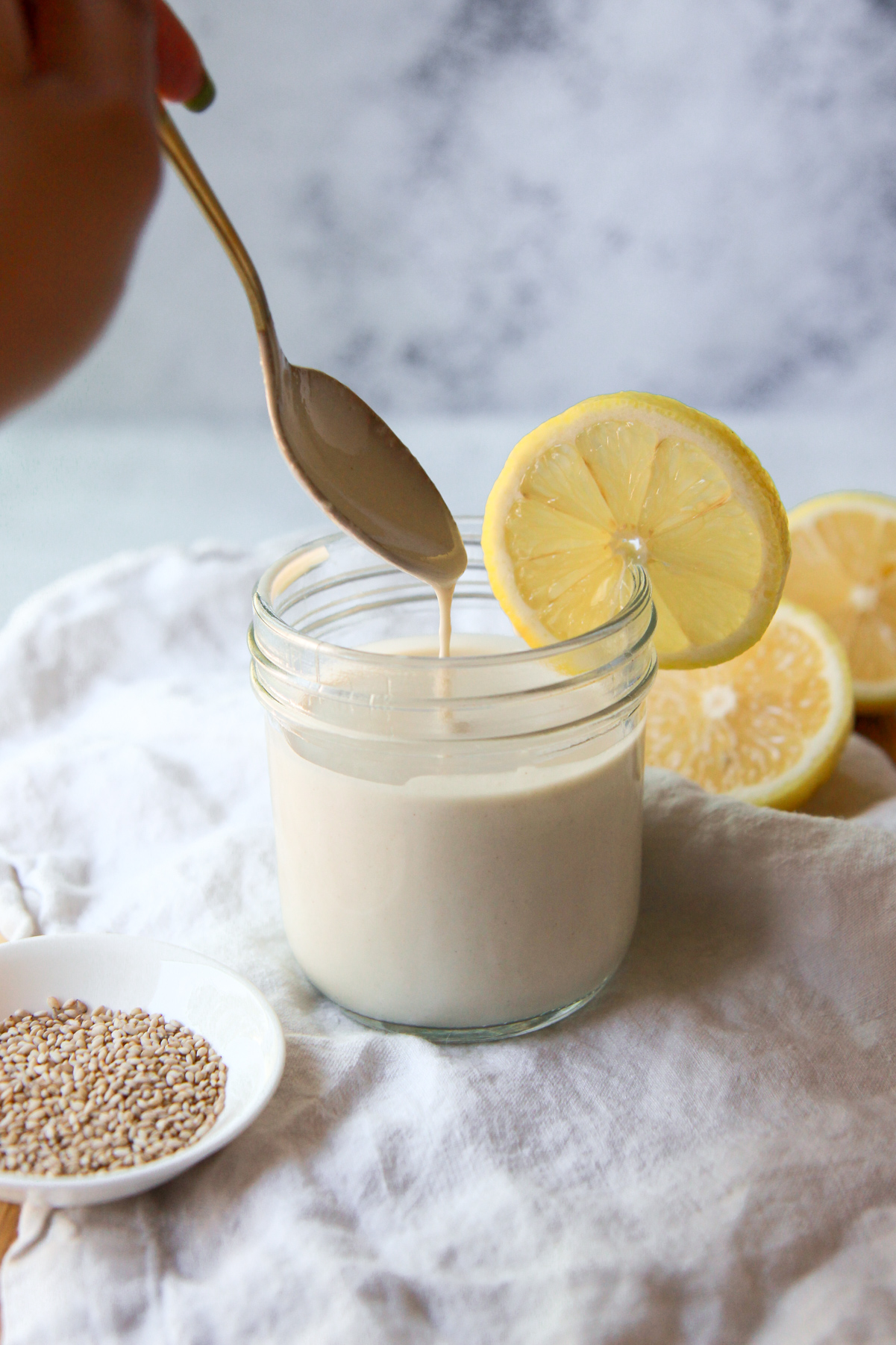
The best part is that it’s totally customizable! You can easily turn it into a lemon garlic tahini by adding some fresh garlic or make a flavorful lemon herb tahini by adding chopped parsley and lemon zest.
Jump to:
What culture is tahini sauce from?
It’s a staple in Levantine culture and cuisine. Tahini sauce has roots in the Levant, a region encompassing Syria, Lebanon, Palestine, and Jordan. Commonly referred to as “tarator” sauce in Arabic, this condiment adds depth, flavor, and creaminess to a variety of traditional Levantine dishes.
If you’ve had falafel or shawarma, you’ve likely tried it– it’s a creamy, tangy dressing commonly served with both. It’s also cooked into meat and vegetable dishes and even used as a salad dressing.
Growing up, my Syrian mother always had me prepare the tarator sauce while she cooked dinner, so naturally, my love for tahini started early on. This lemon tahini sauce is a naturally vegan sauce, made by adding lemon, salt, water, and sometimes garlic, to sesame paste. It makes a sauce you would not believe is completely dairy-free!
What is tahini sauce used for?
You can use it in so many ways! You can serve this tarator sauce as a condiment or sauce to spice up many dishes. I love to use it:
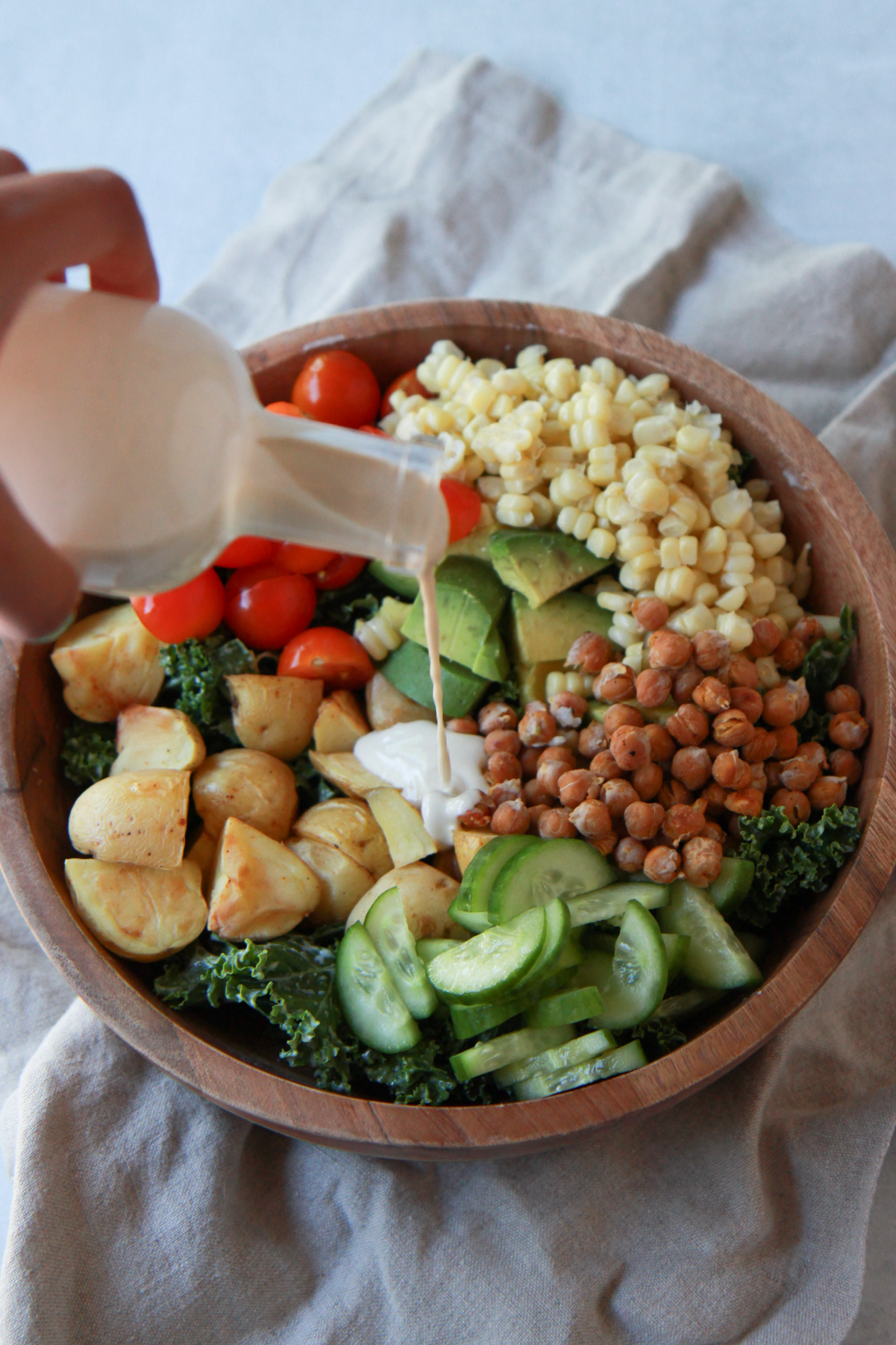
- To garnish roasted veggies, from roasted potatoes to eggplant and cauliflower
- As a sauce for falafel, whether to dip falafel in or as a dressing for your falafel wrap
- As a salad dressing, especially with dark leafy greens like kale and to accompany cucumbers and tomatoes
- As a drizzle to top your grain bowls
- To dip pita chips, raw crudites like cucumbers or carrots, and fries into
Here are some of my favorite dishes to serve lemon tahini sauce with:
- This zaatar avocado toast is elevated with a generous tahini drizzle.
- It's a delicious creamy condiment to drizzle over hearty main meals, like my freekeh recipe with cauliflower and chickpeas.
- It makes the ultimate salad dressing for my savory kale salad.
- It's the perfect sauce to drizzle over my breakfast avocado pitas with spiced chickpeas.
- Drizzle it on top of these meatless stuffed grape leaves!
Ingredient notes
This tahini sauce is made of just a few simple ingredients, yet it delivers big flavor! It’s creamy and tastes tangy, lemony, and surprisingly rich despite being dairy-free.

Tahini
Tahini is the star of this recipe. Tahini is simply sesame paste made from one ingredient, sesame seeds, often toasted, and ground into a paste.
Not all tahini is created equal– make sure you use a tahini that only contains sesame seeds without any additives, and preferably, from the Middle East. I recommend the Palestinian brand Ziyad or the Lebanese brand Alkanater. A good tahini should be pourable and smooth, not too thick or gritty.
Lemon juice
Make sure to use freshly squeezed lemon juice. The bottled juice does not compare and may give you different results. You’ll notice a difference with fresh lemon– it’s brighter, sharper, and balances out the slight bitterness of tahini.
Salt
For the salt, I like to use Himalayan pink salt, as I usually do in my cooking, but feel free to use a fine sea salt or regular table salt. The salt helps balance out the acidity of the lemon and richness of the tahini.
Water
The water is what transforms the tahini paste into a creamy tahini sauce. Depending on if you’re making this sauce for a dip or as a salad dressing, you will need to thin out your lemon tahini sauce accordingly to achieve the desired consistency.
I use filtered water because this sauce isn’t cooked. Cold water leads to better results.
Garlic
Although optional, garlic adds a savory kick that I highly recommend. I prefer to note it as optional because not everyone is a fan of a heavy garlicky taste, especially for breakfast dishes. However, I highly recommend adding a couple cloves to your sauce if you’re serving it with a lunch or dinner dish! For garlic lovers, turning this sauce into a lemon garlic tahini sauce is a must.
See the recipe card below for exact ingredient quantities.
How to make tahini sauce
It couldn’t be easier to prepare tahini sauce. Here’s how to make it at home in minutes:
Mix the tahini and lemon juice
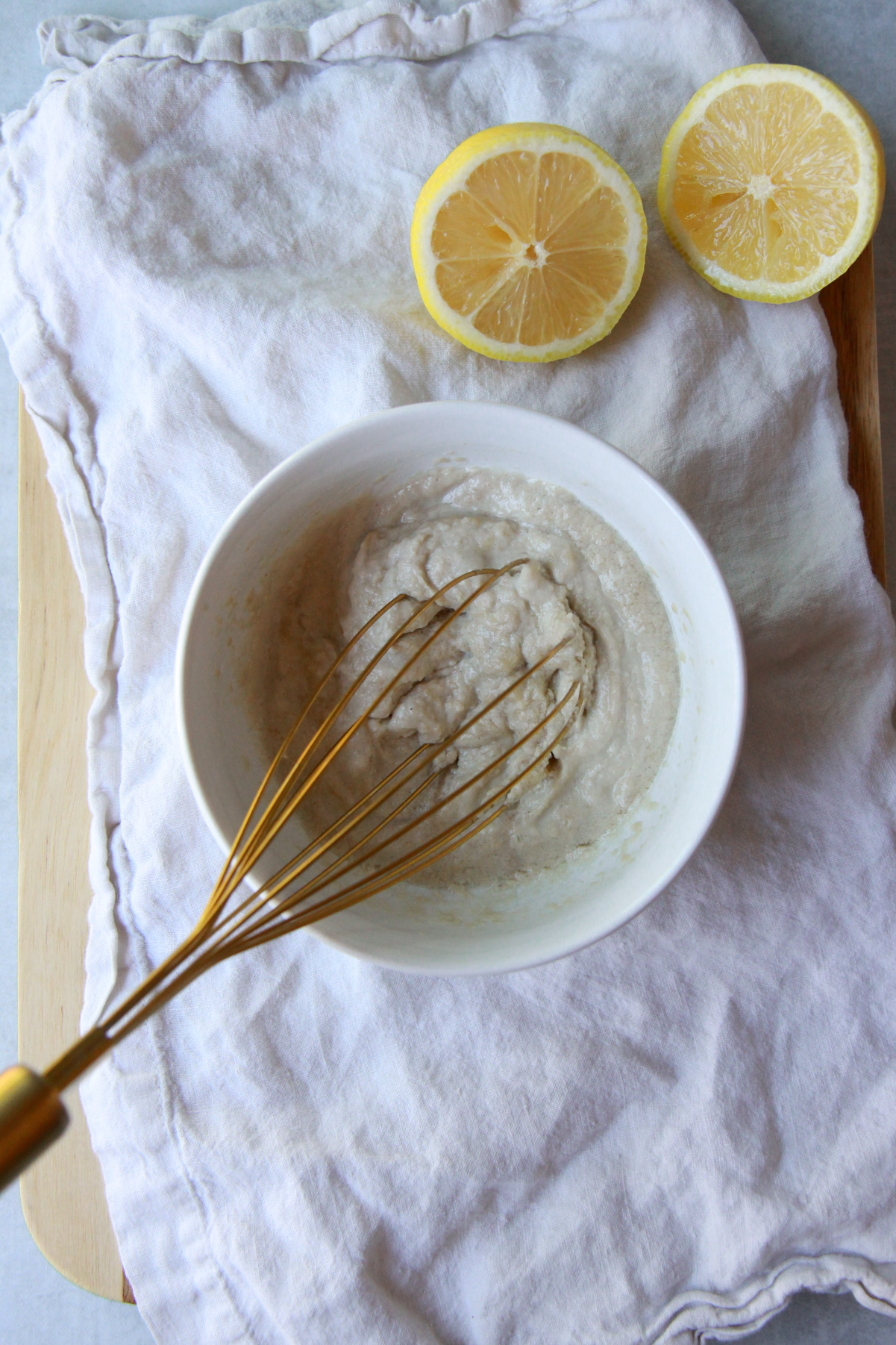
Add your tahini to a mixing bowl. Add the fresh lemon juice and whisk until it becomes lighter and thick. It will seize and look grainy at first, but don’t worry, that’s normal! Mix until it’s just combined into a light, smooth, thick paste.
Thin it out

Slowly drizzle in your water and whisk until you achieve the desired consistency. Start with ¼ cup of water, which is usually good for a thicker sauce or dip. You may need to add more water, 1 tablespoon at a time, for a thinner, pourable consistency, perfect for a Mediterranean tahini salad dressing.
Add salt and any mix-ins
Finally, stir in your salt along with any mix-ins, such as grated garlic, minced parsley, or lemon zest for extra flavor.
Hint: Avoid overmixing the tahini and lemon. Mix until just combined, as overmixing can make it more difficult to incorporate the water later. However if this happens, don’t worry– you will still be able to thin out your sauce with water, but it may take a bit longer to whisk until perfectly smooth.
Top tips for making this recipe
- Adjust as needed: This is a very forgiving recipe. If you accidentally thinned it out too much, it will thicken as it sits and even more in the fridge. If you still find it too thin, you can add more tahini 1 tablespoon at a time.
- Consistency: You can adjust the consistency depending what you’re using this sauce for– as a dip, sauce, or salad dressing. I recommend starting with ¼ cup of water to make a dip. You may need to use up to ½ cup of water to make a tahini salad dressing. Simply add the water 1 tablespoon at a time to achieve the desired consistency.
- Taste and adjust: Make sure to taste and adjust if needed! Add more salt if you find it needs it. If it’s too lemony, you can add tahini 1 tablespoon at a time. If it needs some more lemon, I recommend adding fresh lemon juice 1 tablespoon at a time. The amount of lemon juice needed often varies between tahini brands, so it helps to taste and adjust as needed.
Substitutions & variations
One of my favorite things about this recipe is that it’s easily customizable. Here are a few of my favorite ways to switch things up:
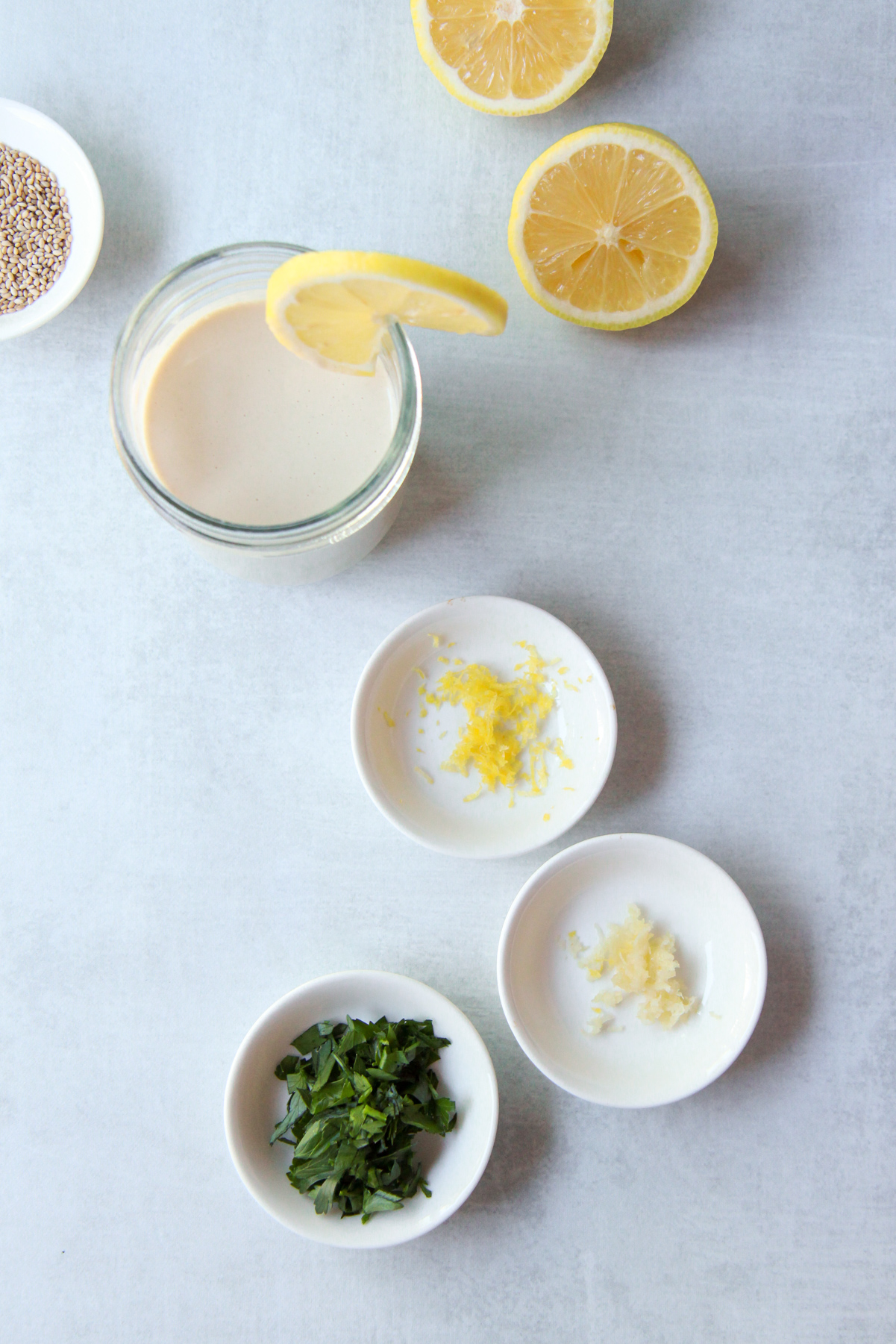
- Lemon juice: Lime juice works just as well, adding a slightly different flavor profile.
- Herbs: Adding a few tablespoons of finely chopped or minced fresh herbs. Italian parsley, mint leaves, fresh dill, or cilantro can turn this into a zesty lemon herb tahini.
- Zest: To enhance the lemony flavor, add some lemon zest.
- Olive oil: If you want to mellow out the overall flavors, try mixing in a drizzle of extra virgin olive oil.
- Spicy: If you prefer a spicy kick, mix in some hot sauce, chili powder, or chili flakes. Fresh cracked black pepper is another great addition, and you can use smoked paprika to add smokiness. I use a spicy version as the sauce for my vegan egg muffins.
Try out my other variations like this maple tahini sauce served with my veggie bowls or my herby green tahini for tofu steaks. My roasted red pepper tahini sauce is also a favorite and perfect for pasta!
How long does tahini last in the fridge?
Tahini sauce keeps well in the fridge for up to a week and a half– if you can keep it that long! As it thickens over time, just thin it out with a little bit of water and stir.
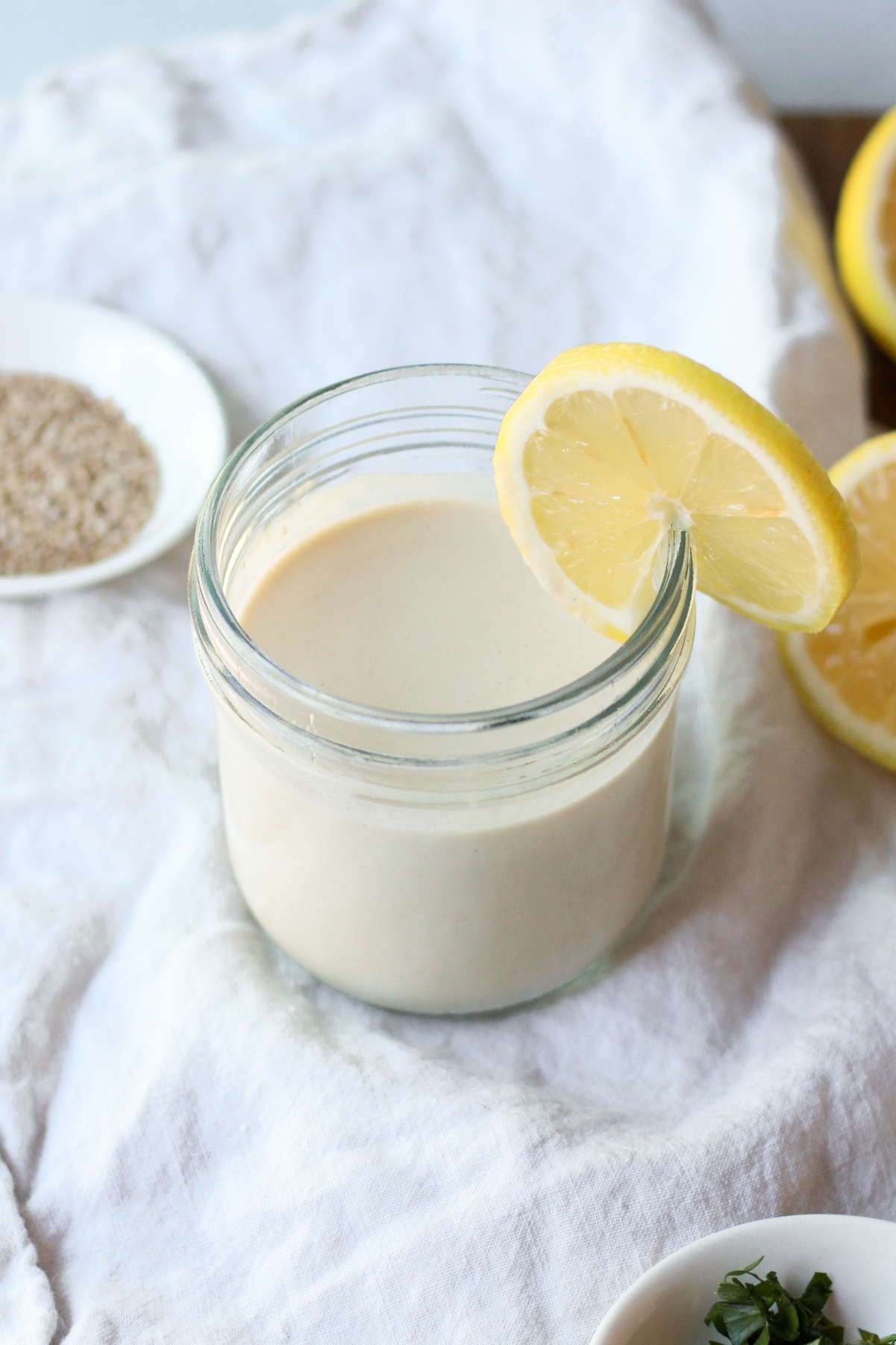
Pro tip: You can also freeze tahini sauce! Store it in a freezer-safe container for up to 3 months. Just make sure to thaw it in the fridge and stir well before using.
FAQs
Simply add water one tablespoon at a time until you reach your desired consistency. It is important to note that tahini sauce gets thicker in the fridge, so you may need to add more water to thin it out when you’re ready to use again.
Absolutely– tahini is made from sesame seeds, packed with calcium, magnesium, and healthy fats. The lemon juice adds vitamin C. These main ingredients make the sauce naturally oil-free and dairy-free, making it a healthy option for sauces, dips, and salad dressing.
Tahini is solely made from sesame seeds, often toasted, ground into sesame paste. Tahini sauce, on the other hand, is made by combining tahini, lemon, salt, and water to create a creamy, tangy condiment. It sometimes includes extra flavorings like garlic or parsley.
Tried this recipe?
If you made this creamy lemon tahini sauce, I’d love to hear from you! Don’t forget to leave a ⭐️ star rating and review below.
Pin it for later or share your recreations with me on Instagram @zenandzaatar! 🥰 I can’t wait to see how you use it!
Recipe

Creamy Lemon Tahini Sauce (Vegan, Mediterranean Dressing)
Ingredients
- ½ cup tahini
- 6 tablespoon lemon juice (juice of one and a half lemons)*
- ¼-1/2 teaspoon salt
- ¼ cup water plus more to thin**
Optional add-ins
- 1-2 cloves garlic grated or minced
- 2 tablespoon Italian parsley or other fresh herbs (mint, dill, cilantro) minced
- 1 teaspoon lemon zest
Instructions
- Mix lemon and tahini until it becomes a thick, lighter-colored paste. It will begin to seize at first but don’t worry- keep mixing until just combined.
- Drizzle in the water slowly and whisk until you reach your desired consistency. For a thinner consistency, add more water 1 tablespoon at a time.
- Mix in the salt and your add-ins of choice. Enjoy! Refrigerate for up to a week and a half.***


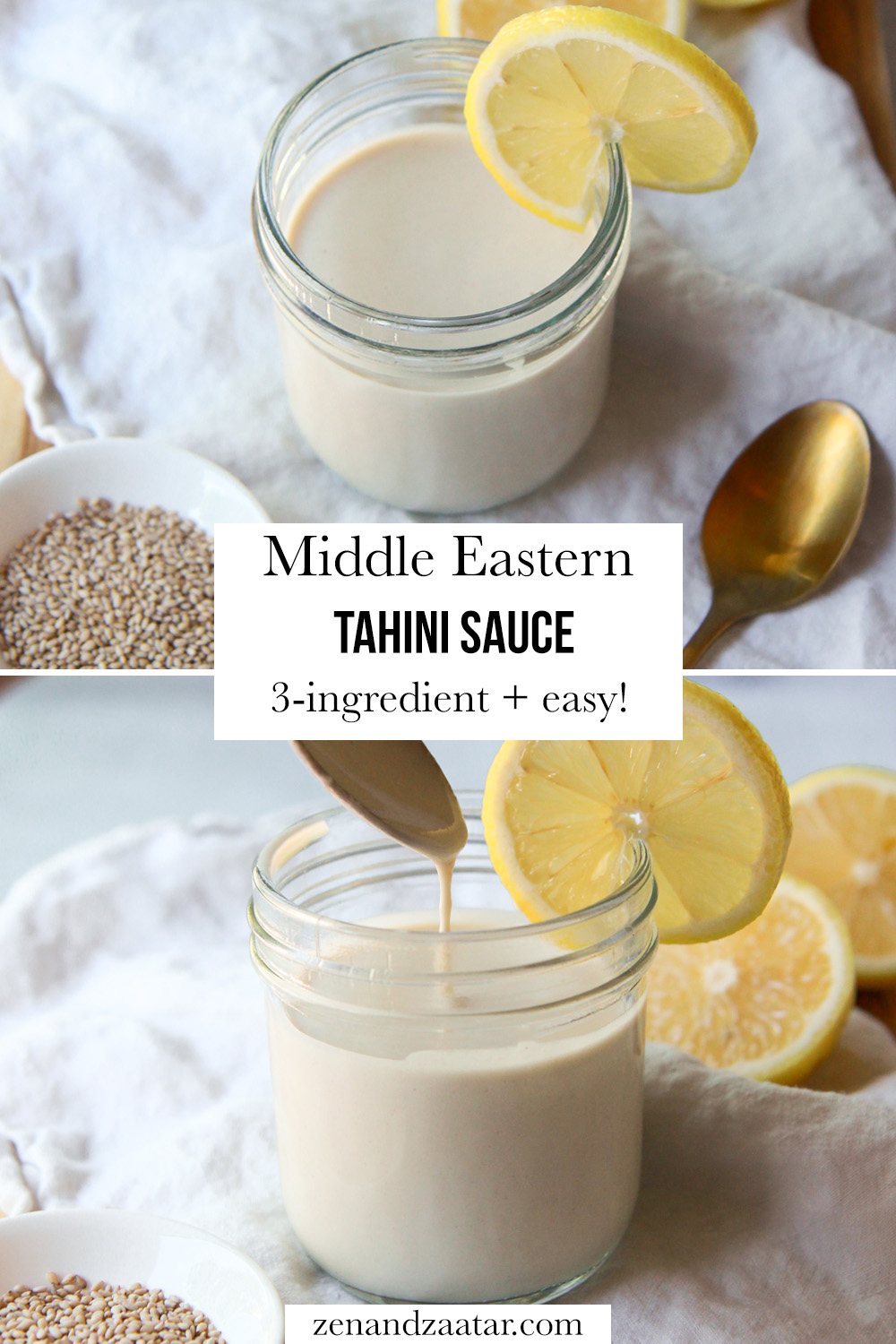
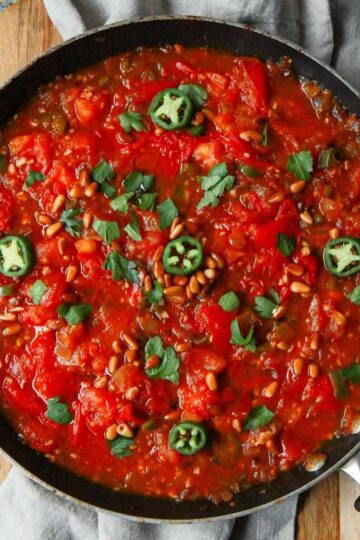

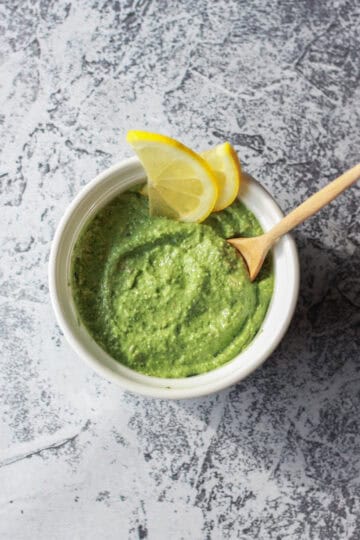
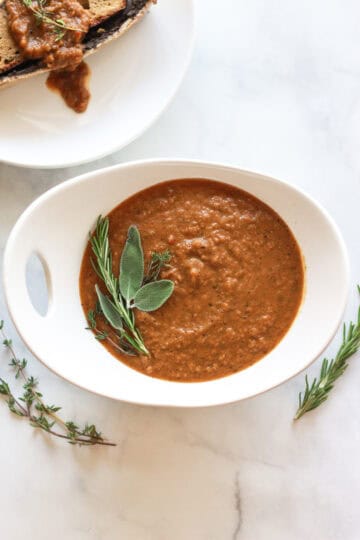
Leave a Reply